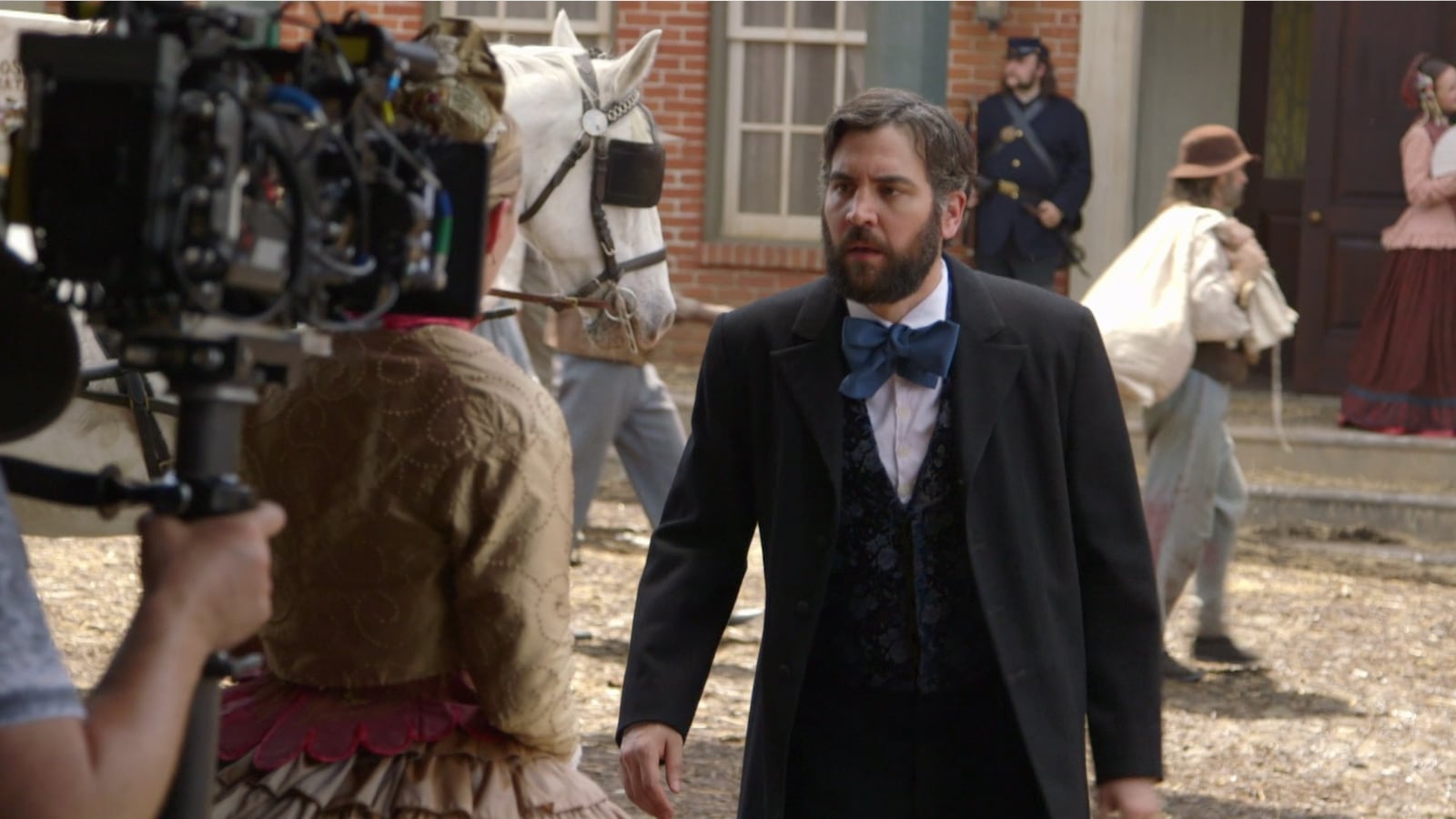
In 1862, during the early years of the Civil War, Dr. Jed Foster (Josh Radnor, How I Met Your Mother), a civilian contract surgeon in the new PBS drama Mercy Street, leaves his family’s tobacco plantation and heads to Alexandria, Virginia. Recently captured by the Union Army, the town, a “free” area where many former slaves sought refuge, quickly becomes a crossroads for a nation at war.
Foster works alongside head nurse Mary Phinney (Mary Elizabeth Winstead, Scott Pilgrim vs. the World), from New England, and Samuel Diggs (McKinley Belcher III, Show Me A Hero), a free black man working as a laborer, who harbors a secret knowledge of medicine having grown up as a servant in the household of a Philadelphia doctor. “He knows what he wants to do with his life” Belcher says, “but the society around him doesn’t allow him to do [it].” Samuel quickly befriends Aurelia Johnson (Shalita Grant, NCIS: New Orleans), a contraband (escaped slave) working as a laundress at Mansion House hospital, a friendship that could prove crucial for both parties.

Mercy Street, executive produced by the Oscar-nominated and Emmy-award winning Ridley Scott, centers on the lives of the residents of this newly occupied town—consisting of doctors, nurses, contrabands (escaped slaves), laborers and Southern loyalists—who are thrust into positions they never intended to assume, doing their best to keep going with the day-to-day life of a nation at war. While anticipating a quick end to the war, enemies are forced to set aside allegiances when lives are at stake.
“I love how human this series really is,” Winstead says, “and how you’re able to see characters on both sides of the war, and how they justify their actions in a way that we can relate to.”
James Green (Gary Cole, VEEP), is a Confederate loyalist and owner of The Mansion House Hotel, which is occupied by the Union Army for use as a hospital. He struggles to maintain his integrity and status within the community, resisting swearing an Oath of Allegiance while simultaneously appeasing the Union. “If there’s a basis of his character, it is to make the best of a not very good situation,” says Cole. “There’s been a lot of material about the Civil War, but [Mercy Street] doesn’t really deal with the war aspect per se, not literally. It deals with the effects of war on an occupied community, but more severely with the aftermath of it.”

The toll of war is vividly depicted through the eyes of the nurses and doctors at the Mansion House Hospital. In one situation, Dr. Foster has to amputate a soldier’s leg.
“A hospital in the Civil War is about as high drama as you could imagine,” says Radnor. Dr. Foster, who is not focused on gray or blue but rather on the welfare of his patients, clashes with Phinney’s character, politically and professionally.
“Mary and Dr. Foster have a bit of an antagonistic relationship,” Winstead says. “Even though Dr. Foster is on the Union’s side, he doesn’t necessarily share her views on slavery. She’s a very staunch abolitionist, so she’s shocked by his cavalier attitude towards slavery, and his lack of commitment to the cause of ridding it.” The two also have “completely different views on medicine and how to go about doing things,” Radnor says.
“It’s been quite a challenge, but it’s been really exciting,” Winstead says of the experience of filming. “I feel so inspired every minute by all the actors, and the direction, and the camera team, the art department. Everybody is working at such a high level that it really makes us all feel like we want to rise to the occasion.”

To prepare for the roles, the actors worked with numerous on-set advisers including medical consultant Dr. Stanley Burns, who demonstrated treatment methods such as suturing wounds. “You feel like an expert,” Radnor says, “but you know it’s still make believe.” Occasionally Radnor’s own discomfort often lends to his character. “I don’t know what’s happening, but the great thing is, my character is uncomfortable and doesn’t know what’s happening. So a lot of times what’s happening as an actor and what’s happening as a character line up.”
While the harsh realities of war are evident in the The Mansion House, Mercy Street’s main focus isn’t the carnage of the battlefield, “but later on down the road and how that affects the soldiers, their mental health, their family members,” Cole says. “To examine that is certainly worthwhile about any war and this one in particular.”
The actors have also researched a great deal about the war, including watching Ken Burns’ PBS documentary The Civil War. “There’s just mountains of material that you can go through,” Radnor says. “Very rarely do you get a period like that, that has that much drama and growth in it. If we want to tell stories to achieve some sort of catharsis, or to learn about ourselves now, you couldn’t do better than focusing on this period.”
For a look at how the brave and conflicted characters of Mercy Street confront and overcome their fears and prejudices in a town at the crossroads of the Civil War, watch the trailer below.






